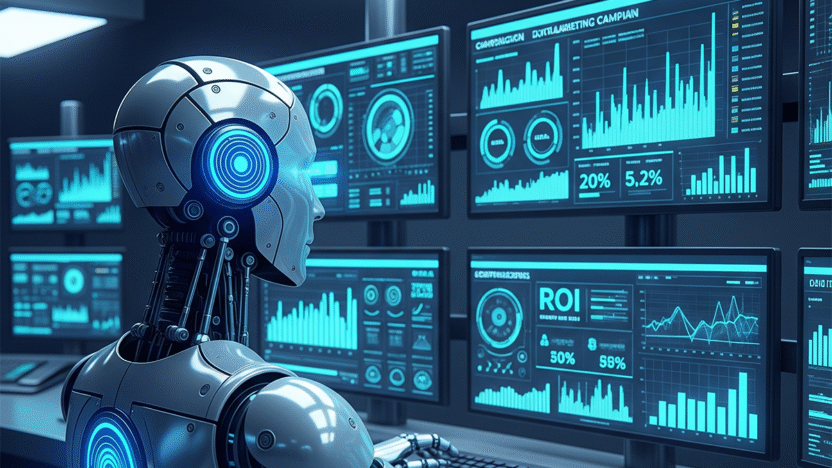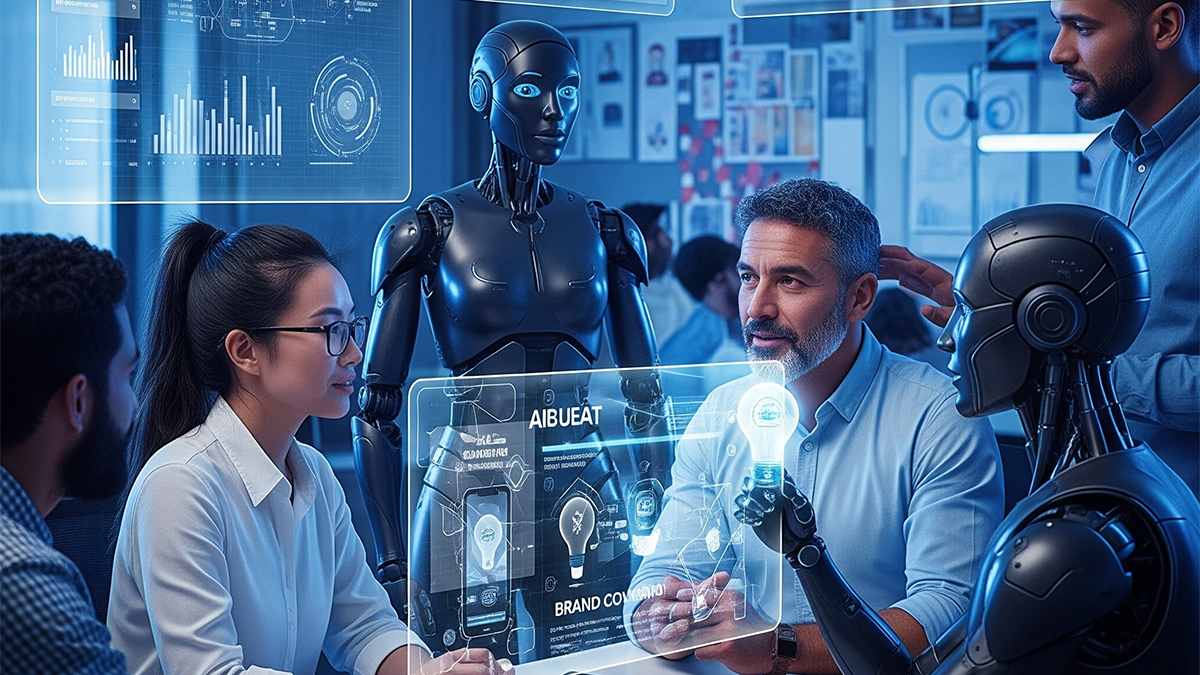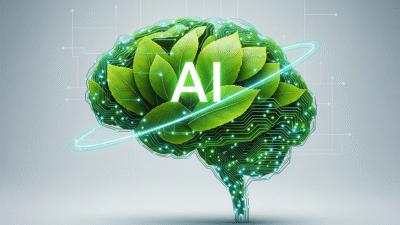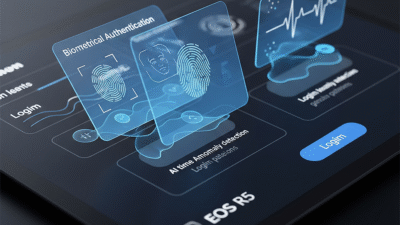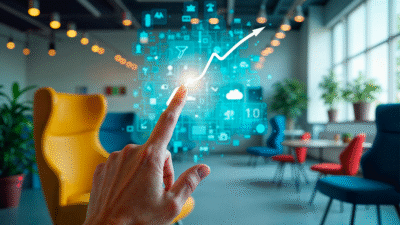- The marketing landscape is evolving faster than ever, driven by rapid advancements in technology and shifting consumer behaviors. This blog explores the key trends, tools, and tactics that will define the future of marketing over the next decade.
- From AI-powered personalization and automation to immersive experiences using AR/VR and the rise of ethical, data-conscious branding, marketers must adapt to stay competitive.
- Learn how voice search, predictive analytics, and next-gen content strategies are transforming the way brands connect with audiences. Whether you’re a seasoned marketer or just starting out, this guide provides valuable insights to future-proof your marketing strategy in 2025 and beyond.
Table of Contents:
- Web3, blockchain, and the decentralized web
- AR/VR in marketing experiences
- AI-generated content and hyper-personalization
- Ethical marketing and data privacy compliance (GDPR, CCPA)
- Voice search, visual search, and IoT-based marketing
- Sustainability and purpose-driven branding
- Marketing automation 2.0
- Forecasting the next big disruptions
- Conclusion
1. Web3, blockchain, and the decentralized web
In 2025, the emergence of Web3 is reshaping digital marketing by introducing a more transparent, user-controlled, and decentralized internet. Powered by blockchain technology, this next evolution in the web is changing how brands interact with consumers with new models for trust, privacy, and value exchange.
What Is Web3?
Web3 refers to the third generation of the internet, where ownership and control shift from centralized platforms (like Google or Meta) to users and creators. It’s built on blockchain and powered by decentralized applications (dApps), smart contracts, and token economies.
Blockchain Role in Marketing
Blockchain enables secure, transparent, and tamper-proof data exchanges. Its applications in marketing include:
- Verified Ad Metrics: Blockchain can combat ad fraud by ensuring transparency in impressions, clicks, and conversions.
- Decentralized Identity: Users control their own data and consent, giving rise to more ethical personalization and zero-party data strategies.
- Tokenized Loyalty Programs: Brands issue crypto tokens or NFTs that offer rewards, access, or community perks, deepening customer engagement.
- Smart Contracts: Automate payments to creators or affiliates based on pre-set terms (e.g., after a campaign reaches X impressions or conversions).
Web3-Driven Marketing Use Cases
- Loyalty & Community Building – Brands like Starbucks and Nike are experimenting with NFT-based loyalty programs, where customers earn exclusive digital assets tied to real-world perks.
- Creator Economy Enablement – Web3 allows influencers and content creators to own their audience and monetize directly through social tokens or gated content.
- Metaverse Integration – Web3 infrastructure underpins many metaverse platforms (e.g., Decentraland, The Sandbox), where brands create virtual storefronts, events, and experiences.
- User-Owned Data & Privacy – Through decentralized identity solutions, users selectively share personal information in exchange for rewards, flipping the traditional ad model.
Benefits of Web3 Marketing
- Transparency & Trust: Public ledgers provide clarity around ad spend and performance.
- User Empowerment: Puts control back into the hands of consumers, fostering trust and loyalty.
- Community-First Branding: Tokens and DAOs (Decentralized Autonomous Organizations) allow brands to co-create with their audience.
- Interoperability: Digital assets (e.g., NFTs) can move across ecosystems, enhancing cross-platform experiences.
2. AR/VR in marketing experiences
Augmented Reality (AR) and Virtual Reality (VR) have evolved from novel tech demos into core tools for immersive marketing. In 2025, forward-thinking brands are leveraging AR/VR to create interactive, personalized, and deeply engaging experiences that drive conversion, loyalty, and brand equity.
This blog explores how AR/VR technologies are transforming the marketing landscape with strategies, use cases, tools, metrics, and trends shaping the future of experiential brand storytelling.
What is AR and VR in Marketing?
Augmented Reality (AR):
- Enhances real-world environments with digital overlays (via smartphones, smart glasses, or tablets).
- Example: Virtual try-ons, 3D product visualizations.
Virtual Reality (VR):
- Fully immersive experiences in a digital environment.
- Requires VR headsets (like Meta Quest, Apple Vision Pro, HTC Vive).
- Example: Virtual showrooms, branded metaverse spaces.
Together, they are enabling marketers to create experiences instead of advertisements.
Why AR/VR Marketing Matters in 2025?
Consumer Demand for Interactivity
- 74% of Gen Z and Millennials prefer experiences over static content.
- Immersive ads increase engagement by up to 80%.
Richer Data Insights
- AR/VR interactions provide deep behavioral insights like gaze tracking, engagement duration, and path analysis.
Emotional Resonance
- Immersion triggers stronger emotional responses, increasing brand recall and loyalty.
Repeat Engagement
- Consumers spend longer in AR/VR environments, returning multiple times if the content evolves.
AR in Marketing: Real-World Applications
1) Product Try-Ons (Fashion & Beauty)
- Brands: Sephora, Gucci, Warby Parker, L’Oréal
- Impact: Reduces returns, increases conversion by 30%+
2) Furniture & Interior Visualization
- Brands: IKEA, Wayfair, Home Depot
- Experience: View furniture in your actual space via AR apps
3) AR Packaging Experiences
- Brands: Pepsi, 19 Crimes Wine, Coca-Cola
- Method: Scan packaging to unlock AR games, stories, or hidden promotions
4) AR Advertising Campaigns
- Channels: Snapchat Lenses, Instagram AR, Google Swirl
- Benefit: 2x click-through rates over traditional display ads
5) Location-Based AR Marketing
- Examples: Pokémon Go brand partnerships, museum or store tours
- Used For: Driving foot traffic and local discovery
VR in Marketing: Immersive Storytelling
1) Virtual Showrooms & Flagships
- Brands: BMW, Tesla, Adidas, Dior
- Use Case: Explore full product lines in a gamified virtual space
2) Metaverse Events & Brand Worlds
- Platforms: Roblox, Fortnite, Meta Horizon Worlds
- Example: Vans’ Skatepark in Roblox with millions of visits
3) VR Brand Storytelling & Documentaries
- Approach: Emotional stories delivered in 360° environments
- Impact: 2x emotional recall vs. standard video
3) Training & Product Education in VR
- Example: Medical companies training customers on equipment use
- Why It Works: Simulated environments improve retention by up to 70%
3. AI-generated content and hyper-personalization
In 2025, artificial intelligence isn’t just assisting marketers but is powering entire content ecosystems. With advancements in natural language processing, computer vision, and predictive analytics, brands now deliver content that’s not only faster to produce but also uniquely tailored to everyone’s preferences, behaviors, and real-time needs.
The Rise of AI-Generated Content
AI writing tools like ChatGPT, Jasper, and Copy.ai is along with video and design platforms like Synthesia, Descript, and Canva AI are redefining how marketers create and scale content.
Key Capabilities:
- Copywriting at scale (blogs, ads, product descriptions)
- AI-generated videos with avatars or voiceovers
- Dynamic emails tailored to user segments
- Image generation for personalized visuals and social creatives
What Is Hyper-Personalization?
Hyper-personalization goes beyond using a user’s name in an email. It leverages AI, machine learning, and real-time data to craft experiences that are context-aware, behavior-driven, and individually relevant.
Examples:
- Personalized website content based on past browsing
- Product recommendations using purchase history + browsing behavior
- Emails triggered by abandoned carts, viewed items, or predicted needs
- Chatbots that tailor responses based on user intent and history
How AI Powers Hyper-Personalization
- Real-Time Data Processing: AI tools analyze user interactions across platforms to identify intent, preferences, and micro-moments.
- Predictive Analytics: Machine learning models forecast user behavior like churn risk, product interest, or optimal send times.
- Dynamic Content Generation: AI systems deliver tailored landing pages, ad creatives, and in-app messages that adapt in real time to user behavior.
- Conversational AI: Chatbots and voice assistants use NLP to deliver custom recommendations, support, or content experiences instantly.
Real-World Examples (2025)
- Netflix: Uses AI to recommend hyper-personalized thumbnails and trailers to different users, improving engagement.
- Amazon: Combines AI-generated product copy with dynamic pricing and customized upsell prompts.
- Spotify: Curates playlists and content intros generated specifically for each user’s taste, location, and habits.
- eCommerce Brands: Run real-time ad campaigns that change visuals, offers, and messaging based on customer segments and behaviors.
4. Ethical marketing and data privacy compliance (GDPR, CCPA)
- In a world flooded with digital noise, brands face increasing pressure to not only attract customers but also to earn their trust. As consumers become more informed, skeptical, and vocal about their data rights, businesses must embrace ethical marketing backed by robust privacy compliance.
- In 2025, ethical marketing isn’t just good. PR is a strategic imperative that intersects with global laws like GDPR and CCPA, new AI guidelines, and rising expectations around transparency, fairness, and user control.
- This blog explores how to integrate ethical principles and legal compliance into your marketing operations without sacrificing innovation, targeting, or ROI.
What Is Ethical Marketing?
Ethical Marketing Defined:
Ethical marketing involves strategies that are truthful, respectful, socially responsible, and transparent. It focuses on doing what’s right for the customer and society, even if it costs more in the short term.
Key Principles:
- Transparency – No deceptive messages or hidden clauses
- Consent – Full user awareness and permission for data use
- Fairness – No manipulation or discrimination in ad delivery
- Privacy – Collect only necessary data, protect it, and delete responsibly
- Accountability – Own up to mistakes; correct them publicly
Overview of Major Data Privacy Laws (2025
1) GDPR (General Data Protection Regulation) – EU
Applies to: Any business handling EU resident data
Key rules:
- Informed consent for data processing
- Right to access, correct, delete data (Right to be forgotten)
- Data minimization and purpose limitation
- Mandatory breach reporting within 72 hours
- Fines: Up to €20M or 4% of global turnover
2) CCPA/CPRA (California Consumer Privacy Act/California Privacy Rights Act)
Applies to: California residents and businesses meeting data thresholds
Key rules:
- Right to know what data is collected
- Right to opt-out of data selling/sharing
- Right to delete personal information
- Required “Do Not Sell My Info” links
- Penalties: $2,500–$7,500 per violation
3) Other Emerging Frameworks (2025+):
- U.S. National Privacy Act (pending)
- India’s Digital Personal Data Protection Act
- China’s PIPL (Personal Information Protection Law)
- AI Act (EU) – Applies to algorithmic targeting and profiling
- ePrivacy Regulation – Will further tighten cookie rules in the EU

5. Voice search, visual search, and IoT-based marketing
The digital experience is rapidly moving beyond the keyboard. In 2025, marketers are designing a world where spoken queries, image recognition, and connected devices are becoming dominant modes of interaction. Voice, visual, and IoT-based searches are reshaping how users discover, evaluate, and engage with brands.
1) Voice Search: Conversational Commerce on the Rise
With the widespread adoption of smart speakers, voice assistants (Siri, Alexa, Google Assistant), and voice-enabled apps, voice search now accounts for over 50% of mobile queries in many regions.
Why it matters:
- Users speak differently than they type; they ask full questions, seek instant answers, and expect a conversational experience.
- Voice SEO focuses on natural language, featured snippets, and local intent (e.g., “best vegan restaurant near me”).
Marketing Implications:
- Optimize for long-tail, question-based keywords.
- Use structured data and FAQs to boost discoverability.
- Create content designed to be read aloud (clear, concise, and informative).
- Invest in voice apps/skills for hands-free customer engagement (e.g., order tracking, support).
2) Visual Search: From Lens to Landing Page
Platforms like Google Lens, Pinterest Lens, and even Amazon’s camera search are enabling users to search using images instead of text.
Why it matters:
- 62% of Gen Z and Millennials prefer visual search over text.
- Visual discovery is ideal for fashion, beauty, home décor, food, and retail.
Marketing Implications:
- Optimize product images with alt text, image schema, and metadata.
- Use high-quality, visually rich content that aids recognition.
- Adopt AR try-on and virtual showroom features.
- Integrate visual search into eCommerce flows to enhance product discovery.
3) IoT-Based Marketing: Reaching the Always-Connected Consumer
The Internet of Things (IoT) is transforming everyday objects, from smart fridges to fitness trackers, into data-generating, experience-enhancing touchpoints.
Why it matters:
- By 2025, over 75 billion connected devices will be in use globally.
- IoT enables context-aware, real-time interactions between brands and consumers.
Marketing Opportunities:
- Hyper-personalized notifications via smartwatches or car dashboards.
- Location-based offers triggered by in-store sensors or wearables.
- Usage-based engagement, like reminders from connected appliances (e.g., a coffee machine recommending refills from the same brand)
- Voice commerce via smart home hubs, enabling reorders or recommendations.
6. Sustainability and purpose-driven branding
- In today’s marketplace, products and services are no longer the only differentiators; values, ethics, and environmental impact now drive brand preference.
- As consumers demand sustainability, inclusivity, and transparency, businesses must evolve into purpose-driven brands or risk irrelevance.
- In 2025, sustainability is not just a corporate social responsibility checkbox; it is a core competitive advantage.
- Purpose-driven branding is how companies connect with people on a deeper level, inspire loyalty, and build long-term growth rooted in trust.
7. Marketing automation 2.0
In 2025, marketing automation has evolved far beyond static email drip campaigns. Marketing Automation 2.0 is defined by AI-powered personalization, real-time customer journey orchestration, and predictive intelligence. It’s not just about efficiency; it is about delivering the right experience at the right time, on the right channel, in a way that feels deeply human.
What’s New in Marketing Automation 2.0?
Unlike traditional automation that relies on fixed rules and timelines, Marketing Automation 2.0 is:
- AI-driven: Learns and adapts based on real-time data and customer behavior.
- Context-aware: Understands where a customer is in their journey and adjusts messaging accordingly.
- Omnichannel-native: Seamlessly connects email, SMS, web, social, push notifications, chat, and voice.
- Real-time responsive: Triggers actions based on immediate signals (e.g., cart abandonment, page dwell time, scroll depth).
Key Features and Capabilities
- Predictive Lead Scoring: AI evaluates historical behavior to score leads based on likelihood to convert, allowing smarter segmentation and prioritization.
- Journey Mapping with Machine Learning: Platforms now uses ML to create dynamic customer journeys that auto-optimize touchpoints based on performance and user actions.
- Behavioral Triggers: Automation isn’t linear anymore. Emails, ads, and offers are now triggered by real-time actions like scrolling, inactivity, or purchases.
- Hyper-Personalized Content: Using customer profiles, past interactions, and preferences, systems tailor not just subject lines but entire landing pages and messaging sequences.
- Automated A/B/N Testing at Scale: AI continuously tests multiple variations of content, timing, and channels to automatically shift traffic to the best-performing options.
- Cross-Channel Orchestration: Manage campaigns across email, web, SMS, social, mobile push, and even WhatsApp with synchronized messaging and data sharing.
Platforms Leading the Shift in 2025
- HubSpot 2.0: Now fully integrated with AI assistants and real-time analytics.
- Salesforce Marketing Cloud + Einstein: Combines automation with AI-led recommendations.
- Braze: Real-time messaging and cross-channel orchestration for mobile-first brands.
- Active Campaign: Strong AI-powered segmentation and predictive automation for SMBs.
- Customer.io and Klaviyo: Dominating eCommerce workflows with data-rich automation.
8. Forecasting the next big disruptions
- The marketing landscape is undergoing a seismic shift. As we move deeper into a post-digital, AI-first, hyper-personalized world, brands must prepare for the next big disruptions that will shape consumer behavior, media, and value exchange.
- Disruption isn’t just about new technology, it is about how people adapt, resist, and demand change. Marketers who forecast these shifts before they hit the mainstream will shape industries, not just chase trends.
1) The AI-Driven Creative Revolution
Generative AI Becomes the Creative Partner
By 2030, generative AI will be deeply embedded across creative, strategy, and campaign execution. What began with tools like ChatGPT and Midjourney will evolve into full-stack AI marketing orchestration platforms capable of:
- Real-time A/B testing of campaigns
- AI-generated branding tailored to psychographic segments
- Predictive creative optimization before campaigns launch
Implications:
- Creative teams will shift from creation to curation and orchestration
- Brand differentiation will rely on emotional intelligence, not just visual polish
- AI ethics and originality in advertising will become core debates
2) Disruption Level: Extreme in the entire marketing pipeline will be reimagined by AI.
Privacy-First Personalization and the Death of Third-Party Cookies
Consumers Want Control. Regulators Agree.
With GDPR, CCPA, and global data regulations, tracking as we know is fading fast. The end of third-party cookies forces a shift to first party and zero-party data.
New Models:
- Consent-based personalization through loyalty apps and experiences
- Contextual targeting replacing behavioral tracking
- AI-powered on-device personalization preserving privacy
Marketer Strategy:
- Develop robust first-party data ecosystems
- Invest in CDPs (Customer Data Platforms) that emphasize transparency
- Build direct consumer relationships with value exchanges (e.g., gated content, utility apps)
Disruption Level: High – economy is being rebuilt on consumer trust.
3) Rise of the Synthetic Consumer
Deepfakes, Digital Twins & Virtual Influencers
As consumers create AI versions of themselves and brands generate digital personas, the line between real and synthetic dissolves.
- Virtual influencers (like Lil Miquela or Imma) already attract millions of fans
- AI-generated user reviews, testimonials, and UGC will rise
- Consumer avatars will shop, interact, and give feedback autonomously
Ethical Considerations:
- How do we disclose synthetic interactions?
- Who owns a consumer digital twin?
- Can AI personas provide informed consent?
Disruption Level: The medium-to-high authenticity debate will define consumer trust.
4) Decentralized Brand Ownership: Community-Led Marketing
Web3 and DAO-Enabled Brand Models
Web3 promised decentralization, and while crypto winters have cooled the hype, community co-creation is here to stay.
- Tokenized loyalty programs will let customers own a stake in brand growth
- DAOs (Decentralized Autonomous Organizations) may help govern brand decisions
- NFTs and digital goods will anchor brand ecosystems in immersive spaces
Example:
- A fashion brand could allow its top customers to vote on design releases via tokens, rewarding them with profits or limited editions.
- Disruption Level: Medium – The future brand may be owned by its fans, not just a boardroom.
5) Context Becomes the New Targeting
From Demographics to Situational Awareness
By 2030, marketing will be driven not just by who the customer is, but where, when, and what they’re doing in real time enabled by:
- Edge computing + 5G
- AI-integrated IoT devices
- Wearables and biometric sensors
Imagine a coffee brand offering a promotion triggered by:
- The weather drops below 50°F
- The user’s smartwatch detects low energy
- Proximity to a coffee shop with excess inventory
Disruption Level: High – Precision moments will outperform mass campaigns.
6) AR/VR and Spatial Marketing Environments
From Scroll to Surround
As Apple Vision Pro, Meta Quest, and Snap AR become mainstream, marketing will shift from 2D feeds to immersive spatial experiences.
New AR/VR Marketing Formats:
- Virtual product trials in a customer’s living room
- Branded metaverse spaces for discovery and community
- Persistent AR layers over real-world locations (billboards 2.0)
Key Strategy Shifts:
- Move from “impressions” to immersions
- Design for UX storytelling rather than flat ads
- Invest in 3D creative talent and XR UX design
Disruption Level: Extreme – The marketing canvas will explode in dimension and interactivity.
9. Conclusion
The marketing landscape of the future isn’t just evolving is undergoing a seismic transformation. As emerging technologies like AI, AR/VR, Web3, and quantum computing intersect with growing demands for privacy, sustainability, personalization, and authenticity, marketing is being reshaped into a multi-dimensional, experience-driven discipline.
In the future, successful marketing leaders won’t just chase trends will build agile ecosystems, grounded in purpose, innovation, and human connection.
To thrive, brands must:
- Treat data with integrity and responsibility.
- Embrace automation with empathy.
- Foster communities, not just campaigns.
- Use technology to enhance but not replace genuine experiences.
- Prioritize trust, transparency, and value over virality.
The next era of marketing will belong to the brands that are not just the loudest, but the most meaningful, adaptive, and customer obsessed. The future is uncertain, but for those who are bold, curious, and grounded in values, it is full of promise.

